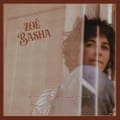Last Friday, Eminem released his 62nd single, Houdini. Reviews were lukewarm to woeful. “Eminem loses the magic,” ran the headline in the New York Times, while website Stereogum went for the more straightforward “Eminem’s New Song ‘Houdini’ Is Really, Really Bad”, criticising everything from the “stilted” rapping to a lyrical joke about the incident when Megan Thee Stallion was shot in the foot by her fellow rapper Tory Lanez.
The public’s response was quite the opposite. A week on, it is the most-streamed song in the UK and guaranteed to become Eminem’s 11th UK No 1. It is both his fastest-selling single in 22 years, and on track to become the UK’s fastest-selling single of the year by anyone, including Taylor Swift.
Regardless of your views on the single’s quality, it’s easy to see why Houdini has been a hit. It is very commercial, based around an immediately recognisable sample from Steve Miller Band’s Abracadabra. And it plays to an ongoing vogue for early 00s musical nostalgia that has found its expression in the resurgent popularity of pop-punk and a rise in rap singles borrowing from the era’s pop and R&B hits: more than anything Eminem has released in recent years, Houdini harks back to his early days.
It heavily references his 2002 hit Without Me, while its video features 50 Cent, who was catapulted to huge sales, with the help of Eminem’s patronage, back in 2003. It precedes an album that mentions his notorious alter ego in its title – The Death of Slim Shady (Coup De Grâce), due later in the summer – and it reverts back to the old Eminem formula of making queasy, cartoonish, controversy-provoking jokes, following a period in which the rapper seemed more interested in fulminating at the latterday state of hip-hop (as on 2018’s Kamikaze) or unleashing the deeply improbable concept of a woke Slim Shady. (In 2016 and 2017, he released a string of anti-Trump tracks that took in the subjects of immigration, gun control and white supremacy.)
Moreover, years of middling and negative reviews have done little to dent Eminem’s popularity. His last album, 2020’s Music to Be Murdered By, sold 4m copies globally, while Kamikaze was the biggest-selling hip-hop album of 2018 in the US. His greatest hits collection, Curtain Call, is the solitary hip-hop album to enjoy the UK chart ubiquity usually reserved for august artists such as Fleetwood Mac, Queen or Elton John: it has spent a staggering 620 weeks in the British album charts.
His ongoing success is rendered a little strange by the fact that he no longer seems to be a central figure in contemporary rap culture. The days when Eminem was discussed 159 times in the pages of the New York Times in one year – as apparently happened in 2002 – are long behind him, and however successful Houdini may be, it seems unlikely to prove as influential as his 2000 hit Stan, which gave the English language a new word for toxic die-hard fans. Hip-hop tends to move fast, constantly throwing up new stars and styles, and when it comes to generating controversy, Eminem has long since been outstripped by the behaviour of Kanye West.
Longstanding British hip-hop DJ Semtex calls Eminem “one of the rap gods”, but says he “didn’t pay attention” when Houdini was released, and was unsure even whether to play it on his weekly Capital Xtra show. “It doesn’t fit in with anything else, with either the UK or US sound. The kids are streaming Central Cee and Lil Baby right now.” Moreover, it’s “not creatively great. As a fan, I think: you could have done more, bro.”

He suggests Eminem’s audience aren’t the kind of mainstream hip-hop fans who hung on every insult thrown during the recent row between Drake and Kendrick Lamar, but rather “ageing Eminem stans” drawn in by Houdini’s familiarity, and the peculiar cosiness of its controversy-mongering. “Talking about Megan Thee Stallion looks like it’s controversial but it actually isn’t. Talk about Diddy being arrested; talk about Drake and Kendrick, if you want to go in on hip-hop. Macklemore’s onstage speech in Germany talking about Palestine and the Holocaust – that’s shock. I watched that and thought – wow, he took it there.”
There is undoubtedly some truth in what Semtex says but it can’t be the whole story. Last year, streams of Eminem’s 2004 single Mockingbird suddenly surged to over 1.5bn after it became a huge viral hit on TikTok, a platform far more popular with teenagers than anyone old enough to remember Eminem’s heyday first-hand.
Lee Thompson, of music industry website Record of the Day, suggests Eminem’s appeal “spans three generations”, and notes that the single has barely been playlisted on UK radio. “It’s another example of the attentive, younger-skewed streaming audience being way ahead of the disconnected old gatekeepers,” he says. “Eminem was absolutely huge with the 15-19 age bracket when he first emerged. They’re now in their early 40s, probably with a teenage kid or two living at home with them in 2024, and that influence will have rubbed off on them, no question.”
It’s an intriguing thought. There might be a generation for whom Slim Shady isn’t redolent of parent-scaring nihilism, but of their actual parents: of childhood journeys in the car soundtracked by Stan or My Name Is. And perhaps their parents weren’t mainstream hip-hop fans 20 years ago – just Eminem fans. In Anthony Bozza’s authoritative 2004 biography, Whatever You Say I Am, he identifies a moment when the rapper’s audience changed from sceptical Black crowds won over by his sheer talent, to fans who seemed more like punk or nu-metal devotees: pissed-off, opinionated and “predominantly white”. If Houdini seems at one remove from the rest of hip-hop, that’s somewhere Eminem has been for a very long time.
Source: theguardian.com


